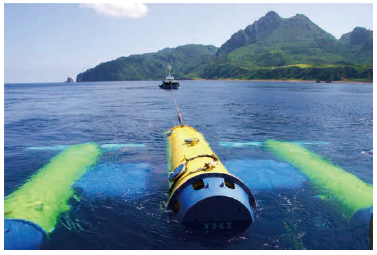Harnessing the Power of the Ocean
Japan's Kairyu Tidal Energy Project
In the pursuit of renewable energy, Japan is taking an extraordinary step into the deep blue. Imagine capturing the natural power of ocean currents and converting it into sustainable, endless energy. This is exactly what Japan’s Kairyu tidal power project is set to achieve. Let’s dive into how this innovative project is harnessing the immense power of the ocean to help meet Japan’s energy needs.
What is the Kairyu Project?
The Kairyu tidal power project is a groundbreaking initiative developed by IHI Corporation, in collaboration with Japan’s New Energy and Industrial Technology Development Organization (NEDO). This ambitious project aims to leverage the power of the Kuroshio Current, one of the world’s strongest ocean currents, which flows along Japan’s eastern coast. The ultimate goal? To generate clean, reliable electricity and contribute to Japan’s renewable energy targets.
The journey began in 2017, when IHI and NEDO launched the development of Kairyu, a 330-ton tidal energy prototype. The design features twin turbines that resemble airplane engines, connected by a central fuselage. This heavy equipment is anchored underwater, where it uses the current to turn its turbines and generate electricity.
Turning the Ocean Current into Power
Between 2017 and 2022, the Kairyu prototype underwent rigorous testing in the waters surrounding the Tokara Islands, in southwestern Japan. The tests were highly successful, confirming that the turbine could generate a consistent output of 100 kilowatts. This demonstrated not only the feasibility of the design but also its potential for scaling up.
The Kairyu project’s significance lies in its ability to utilize the Kuroshio Current, which is one of the most powerful currents globally and offers a consistent source of energy. Unlike solar and wind power, which are subject to weather changes, ocean currents provide a steady flow, offering the potential for continuous energy generation—an ideal complement to other renewable energy sources.
Scaling Up for a Greener Future
After completing the successful demonstration phase, the next step for Kairyu is scaling up. IHI Corporation plans to build a full-scale 2-megawatt system, involving larger turbine blades and enhanced efficiency. This bigger system is designed to generate more power, pushing the project towards commercial deployment in the coming decade.
The full-scale Kairyu turbines will have blades of around 40 meters in diameter, which will allow the turbines to harness even more of the ocean’s energy. The goal is to have this expanded version operational in the Kuroshio Current by the early 2030s, contributing significantly to Japan’s energy mix and helping the country achieve its climate goals.
A Step Toward Energy Independence
The importance of the Kairyu project cannot be overstated. Japan has long been reliant on imported fossil fuels, and this project represents an important stride towards greater energy independence. With its strong commitment to renewable energy, Japan is investing in technologies that make use of its unique natural resources. Harnessing the energy of the ocean current is just one example of how the country is leading the way in renewable innovation.
This project also has the potential to be a game-changer globally. Ocean currents are a largely untapped source of renewable energy, and Japan’s progress with Kairyu could set the stage for similar initiatives worldwide. If successful, the commercial deployment of tidal energy technology could help other coastal nations reduce their carbon footprint while achieving more reliable energy production.
Looking Forward
The Kairyu tidal power project is not just a testament to Japan’s technological prowess, but a symbol of its commitment to sustainable innovation. With commercial operations expected to start in the early 2030s, Kairyu is a beacon of hope for the future of renewable energy, showing us that even the mighty ocean currents can be harnessed for a sustainable future.
By exploring the potential of ocean energy, Japan is taking an important step forward—one that could inspire other nations to look beyond conventional renewables and consider the power that lies in our oceans. It’s an exciting reminder that the path to a cleaner world might just be flowing right beneath the waves
What do you think about ocean energy as a renewable resource? Could it be the next big thing in sustainable energy? Share your thoughts in the comments below!
